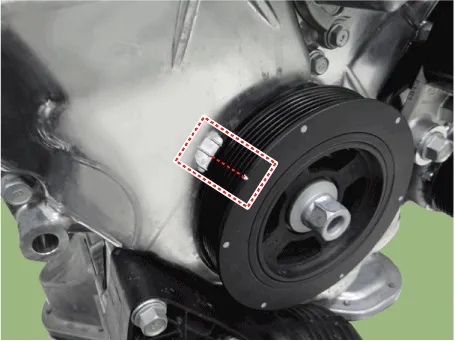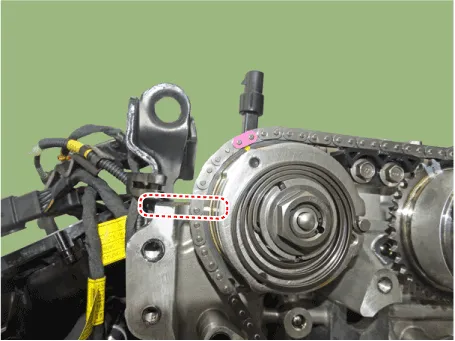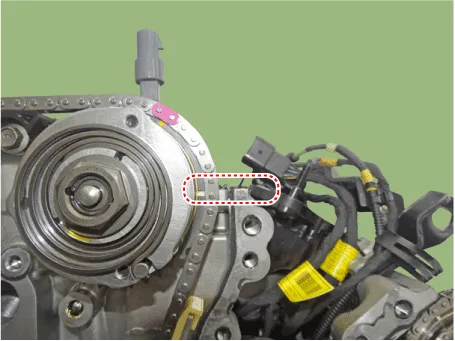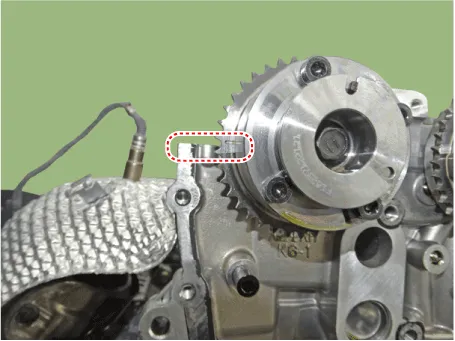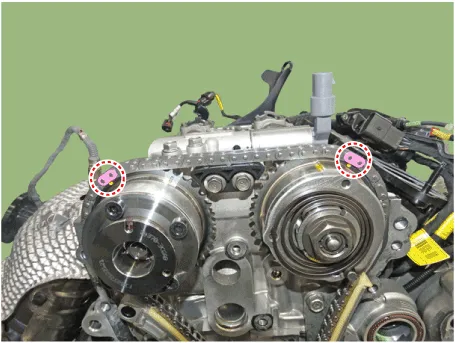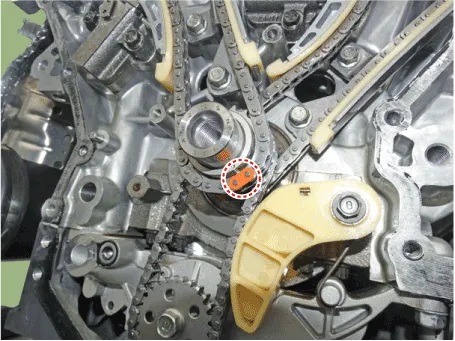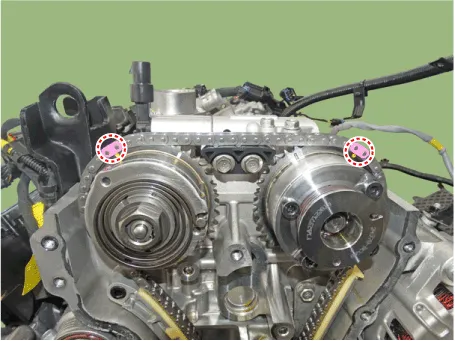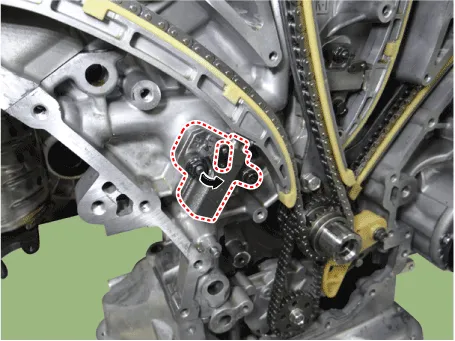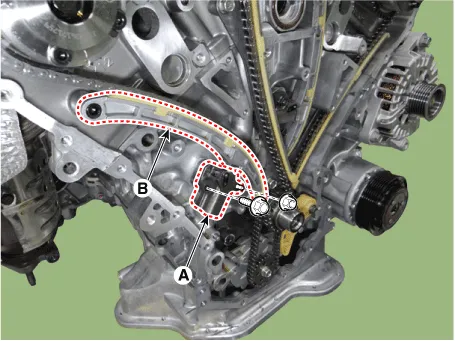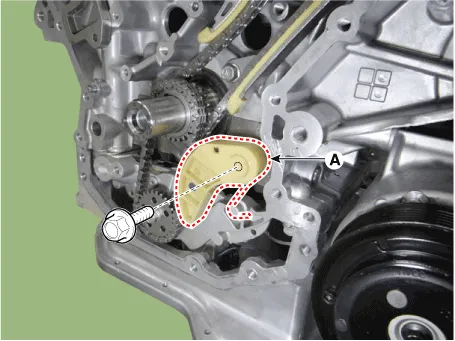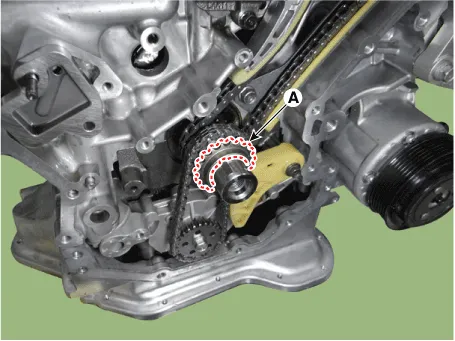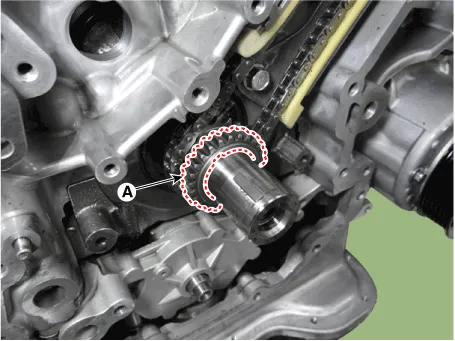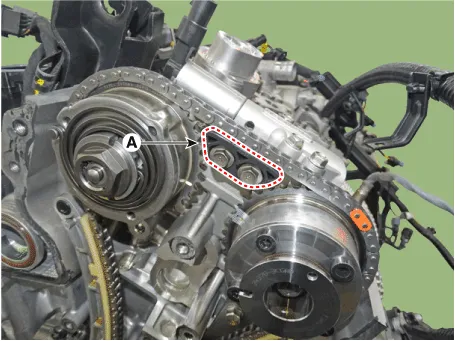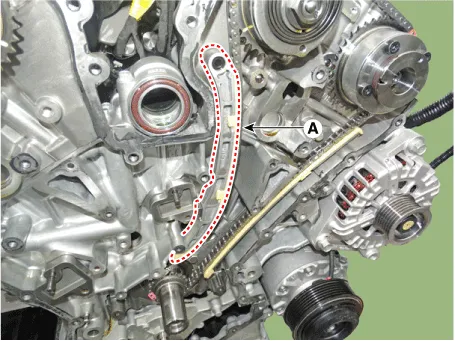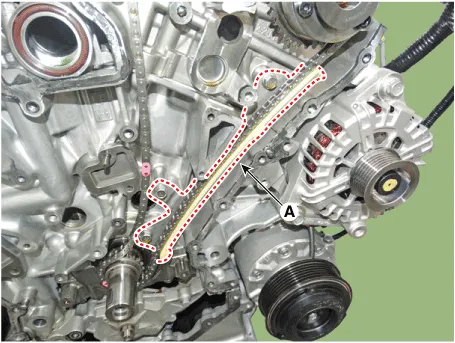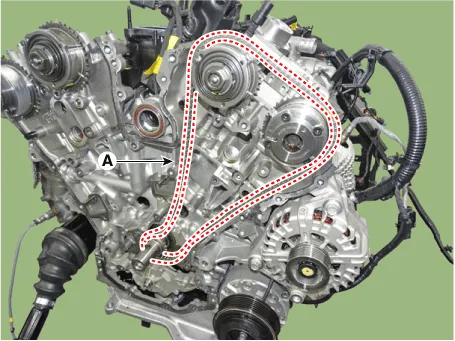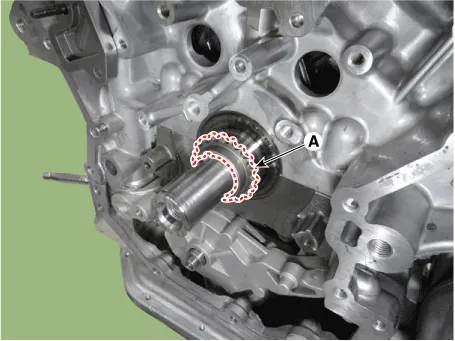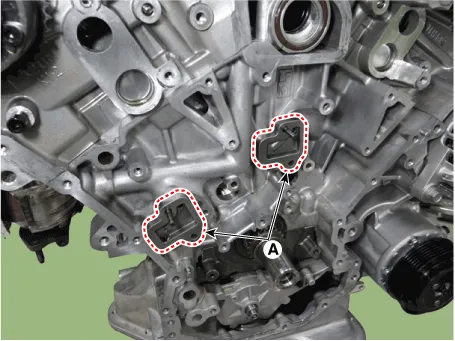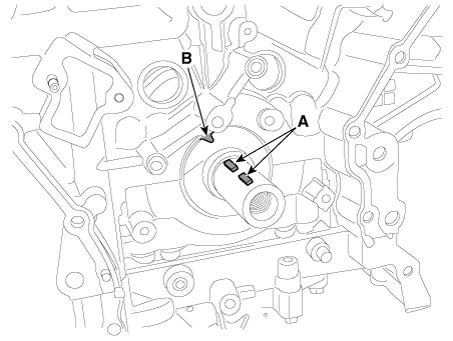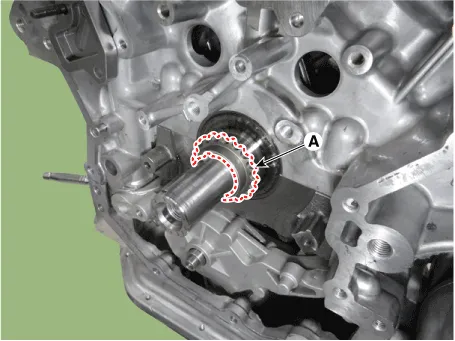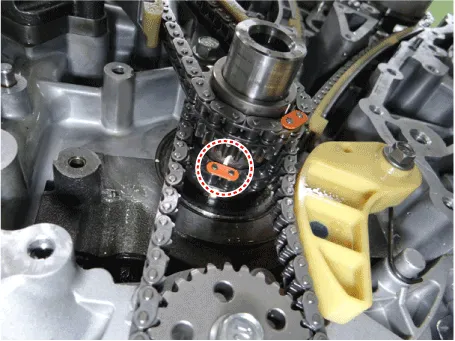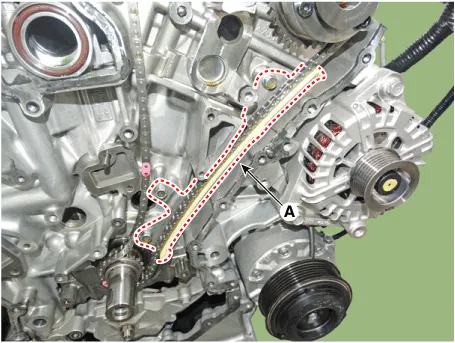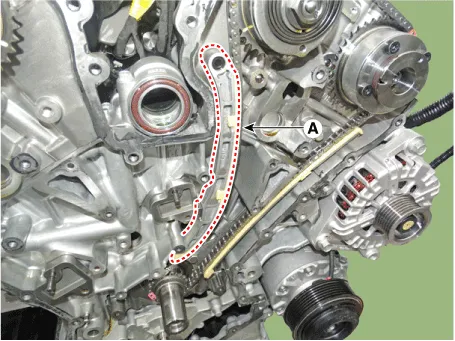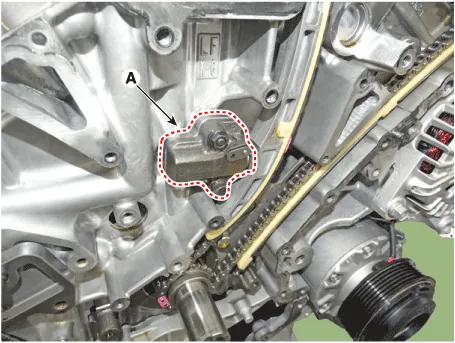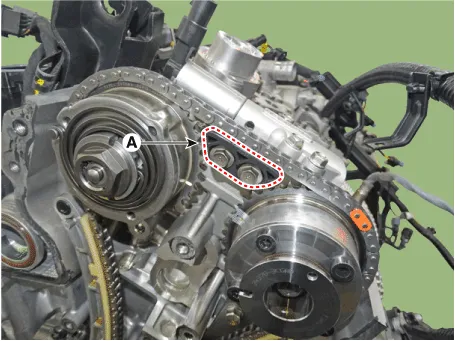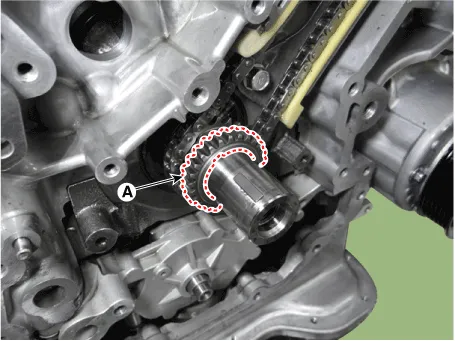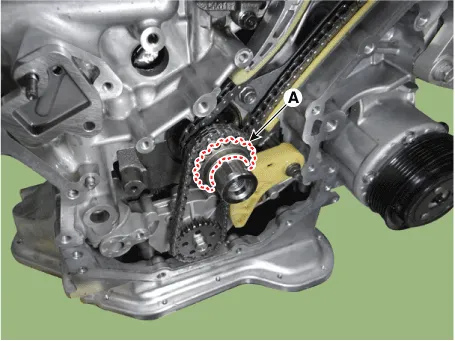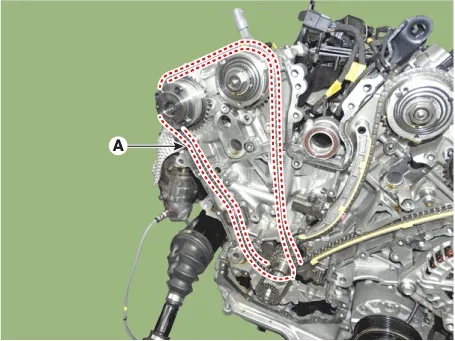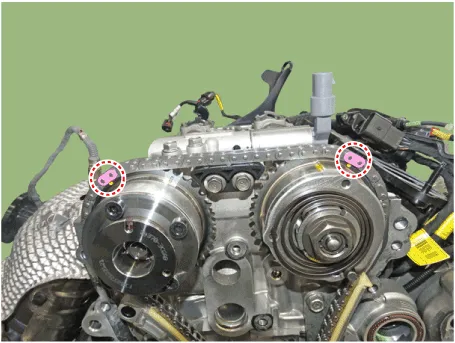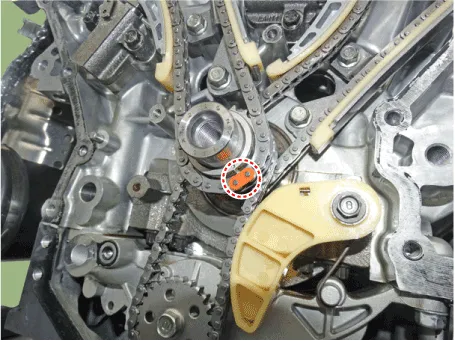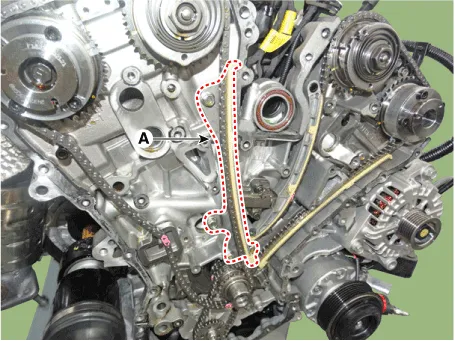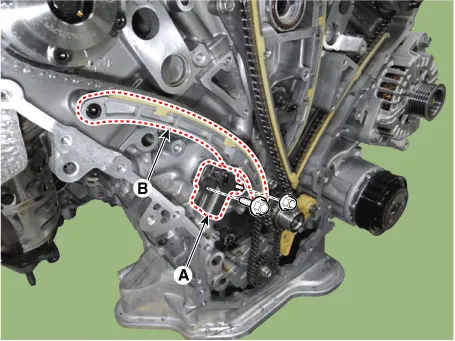Hyundai Palisade (LX2): Timing System / Timing Chain
Repair procedures
| Removal |
|
| 1. |
Set No.1 cylinder to TDC/compression.
|
| 2. |
Remove the timing chain cover.
(Refer to Timing System - "Timing Chain Cover")
[RH]
[LH]
|
| 3. |
Release the ratchet by pulling the link down using a thin rod. Compress
the piston and then insert a stopper pin into the hole on the ratchet
to hold the compressed piston.
|
| 4. |
Remove the RH timing chain cam to cam guide (A).
|
| 5. |
Remove the RH timing chain auto tensioner (A) and the RH timing chain
tensioner arm (B).
|
| 6. |
Remove the RH timing chain guide (A).
|
| 7. |
Remove the RH timing chain (A).
|
| 8. |
Remove the oil pump chain tensioner assembly (A).
|
| 9. |
Remove the crankshaft chain sprocket (A) (RH camshaft drive).
|
| 10. |
Remove the oil pump chain sprocket (A) and oil pump chain (B).
|
| 11. |
Remove the crankshaft sprocket (A) (Oil pump drive).
|
| 12. |
Release the ratchet by pulling the link down using a thin rod. Compress
the piston and then insert a stopper pin into the hole on the ratchet
to hold the compressed piston.
|
| 13. |
Remove the LH timing chain cam to cam guide (A).
|
| 14. |
Remove the LH timing chain auto tensioner (A).
|
| 15. |
Remove the LH timing chain tensioner arm (A).
|
| 16. |
Remove the LH timing chain guide (A).
|
| 17. |
Remove the LH timing chain (A).
|
| 18. |
Remove the crankshaft chain sprocket (A). (LH camshaft drive).
|
| 19. |
Remove the tensioner adapter assembly (A).
|
| Inspection |
| 1. |
Check the camshaft sprocket and crankshaft sprocket for abnormal wear,
cracks, or damage. Replace as necessary.
|
| 2. |
Inspect the tensioner arm and chain guide for abnormal wear, cracks,
or damage. Replace as necessary.
|
| 3. |
Check that the tensioner piston moves smoothly when the ratchet pawl
is released with thin rod.
|
| Installation |
| 1. |
The key (A) of crankshaft should be aligned with the timing mark (B)
of block. As a result of this, the piston of No.1 cylinder is placed
at the top dead center on compression stroke.
|
| 2. |
Install the tensioner adapter assembly (A).
|
| 3. |
Install the crankshaft chain sprocket (A). (LH camshaft drive).
|
| 4. |
Install the LH timing chain (A).
|
| 5. |
Install the LH timing chain guide (A).
|
| 6. |
Install the LH timing chain tensioner arm (A).
|
| 7. |
Install the LH timing chain auto tensioner (A).
|
| 8. |
Install the LH timing chain cam to cam guide (A).
|
| 9. |
Pull out the pins (A) of LH timing chain auto tensioner.
|
| 10. |
Install the crankshaft sprocket (A) (Oil pump drive).
|
| 11. |
Install the oil pump chain sprocket (A) and oil pump chain (B).
|
| 12. |
Install the oil pump chain tensioner assembly (A).
|
| 13. |
Install the camshaft chain sprocket (A). (RH camshaft drive)
|
| 14. |
Install the RH timing chain (A).
|
| 15. |
Install the RH timing chain guide (A).
|
| 16. |
Install the RH timing chain auto tensioner (A) and the RH timing chain
tensioner arm (B).
|
| 17. |
Install the RH timing chain cam to cam guide (A).
|
| 18. |
Pull out the pins (A) of RH timing chain auto tensioner.
|
| 19. |
After rotating the crankshaft 2 revolutions in regular direction (clockwise
viewed from front), confirm the timing mark.
|
| 20. |
Install the timing chain cover.
(Refer to Timing System - "Timing Chain Cover")
|
| 21. |
Install the remaining parts in the reverse order of removal.
|
Repair procedures Removal • Be careful not to damage the parts located under the vehicle (floor under cover, fuel filter, fuel tank and canister) when raising the vehicle using the lift.
Other information:
Hyundai Palisade (LX2) 2020-2025 Service Manual: Description and operating principle
Description and Operation Wireless Power Charger System During ACC or IG ON, battery voltage is supplied to the wireless power charger system to transmit an output of 5 W to mobile phone. Mobile phones certified with the wireless charging standard WPC (Qi 1.
Hyundai Palisade (LX2) 2020-2025 Service Manual: Rear Heater Unit
Components and components location Component Location 1. Rear Heater & A/C Unit Repair procedures Replacement • Be careful not to damage the parts located under the vehicle
Categories
- Manuals Home
- Hyundai Palisade Owners Manual
- Hyundai Palisade Service Manual
- ISG (Idle Stop and Go) system
- How to reset the power liftgate
- Convenient Features of Your Vehicle
- New on site
- Most important about car


